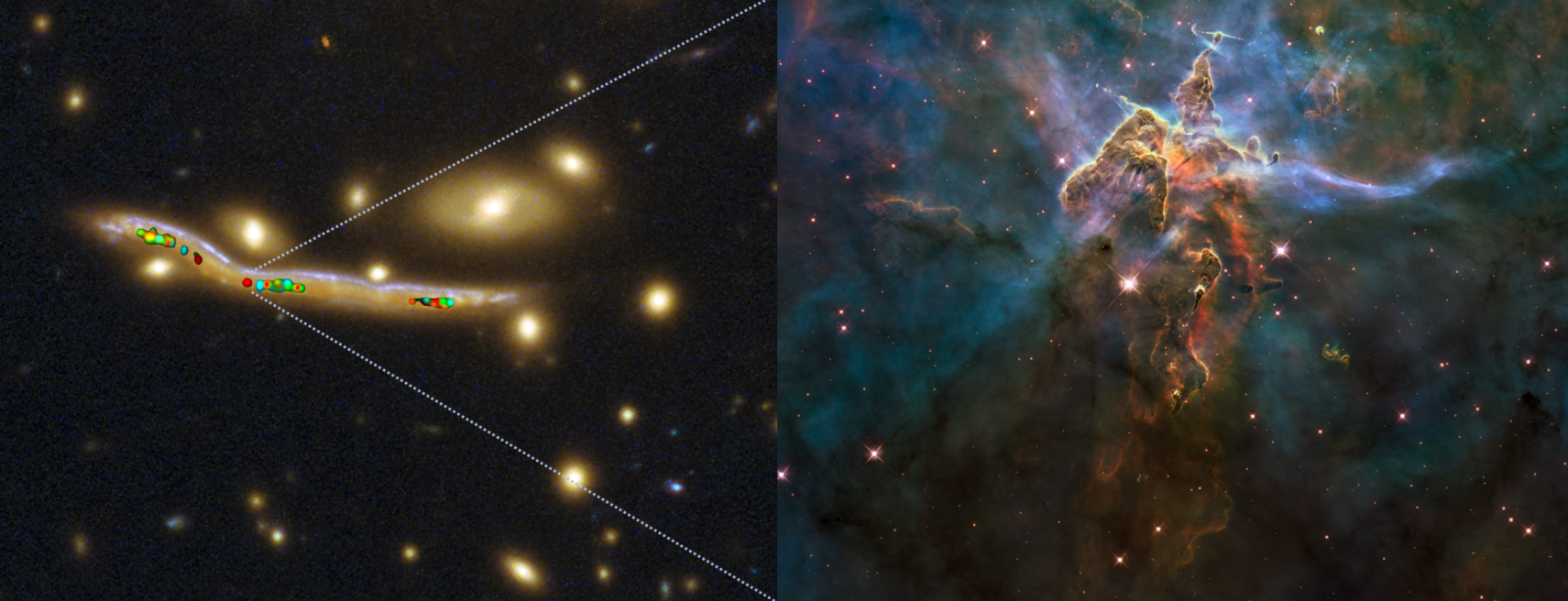The stellar nurseries of distant galaxies
UniGE PRESS RELEASE (Septembre 16, 2019)
Star clusters are formed by the condensation of molecular clouds, masses of cold, dense gas that are found in every galaxy. The physical properties of these clouds in our own galaxy and nearby galaxies have been known for a long time. But are they identical in distant galaxies that are more than 8 billion light-years away? For the first time, an international team led by the University of Geneva (UNIGE) has been able to detect molecular clouds in a Milky Way progenitor, thanks to the unprecedented spatial resolution achieved in such a distant galaxy. These observations, published in Nature Astronomy, show that the distant clouds have a higher mass, density and internal turbulence than the clouds hosted in nearby galaxies and that they produce far more stars. The astronomers attribute these differences to the ambient interstellar conditions in distant galaxies, which are too extreme for the molecular clouds typical of nearby galaxies to survive.

Molecular clouds detected at the unprecedented resolution of 90 light-years in the Cosmic Snake, located more than 8 billion light-years away, a typical progenitor of our galaxy (left). Observed at resolutions 50,000 times better, each of these clouds resembles the very tormented gas of the Carina nebula located only 7500 light-years away, a veritable nursery of emerging stars (right).
Publication in Nature Astronomy
Contacts: Miroslava Dessauges-Zavadsky, Daniel Schaerer
